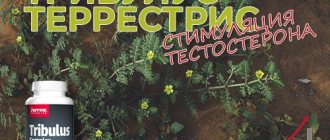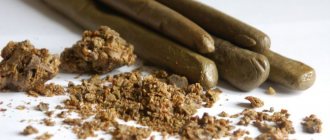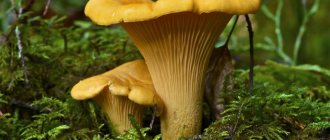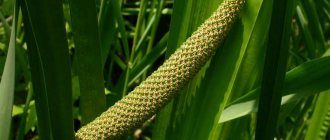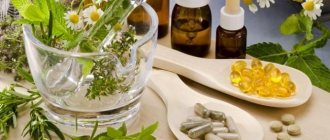What marigolds look like
Marigolds are an unpretentious annual or perennial plant belonging to the Asteraceae family. South America is considered their homeland. Marigolds were brought to European countries by colonialists in the 16th century. First of all, the plant is valued for its attractive appearance, thanks to which it is used for decorative purposes.
Marigolds are distinguished by erect stems reaching a height of 2 m. Thanks to the taproot system, the plant is able to survive on porous soils with rapid evaporation of moisture. Marigold leaves are distinguished by their jagged shape and rich green color. The inflorescences are baskets containing small tubular and reed flowers inside. The color of marigold petals depends on their variety. It comes in white, burgundy, brown or red. The average size of the inflorescences is 6 cm. Most often, marigolds live on grassy slopes and open clearings. In total, there are about 53 plant species in nature.
Since ancient times, marigolds have been considered a symbol of family wealth.
Attention! Due to their bright aroma, marigolds are used as an insecticide that repels moths.
Chemical composition of marigolds
Botanists explain the healing properties of marigolds due to their rich content of nutrients. The highest concentration is present in the above-ground part of the plant. Flowers consist of 45% essential oils, thanks to which marigolds have a pronounced aroma. The composition also contains the following components:
- carotenoids;
- organic acids;
- phytoncides;
- vitamins of groups A, P, B, E and C;
- flavonoids;
- minerals (selenium, iron, potassium, zinc, magnesium and calcium);
- lutein;
- alkaloids;
- essential oils.
Properties and benefits of marigold oil
The remedy obtained from Chernobrivtsev is very useful. Fans of alternative medicine note that the oil solution is characterized by the following medicinal properties:
- sedative;
- antimicrobial;
- antiseptic;
- antiviral;
- diuretic;
- laxative;
- antispasmodic;
- anti-inflammatory;
- antifungal;
- immunomodulatory.
It is used to relieve pain caused by arthritis, sciatica and other diseases of the musculoskeletal system. The drug is used to treat certain gastrointestinal diseases and reduce swelling. Often, infusions of marigold oil are recommended for nervous disorders, including depression.
Patients who have the initial stage of arterial hypertension are prescribed a remedy from Chernobrivtsev to cleanse and strengthen blood vessels. Its action prevents the development of atherosclerosis and reduces the risk of stroke and heart attack.
Marigold oil infusions contain a large amount of lutein. When this substance enters the body in sufficient quantities, the risk of developing cataracts is reduced. Lutein also helps maintain visual acuity. Therefore, it is recommended to use marigold oil for the eyes.
The healing infusion destroys many pathogenic microorganisms. This is due to its antiseptic, antiviral, antifungal properties. Medicinal substances affect infectious agents and promote accelerated wound healing.
Due to the disinfecting properties of marigolds infused with oil, they are used as both an external remedy and a medicine that can be taken in courses. When consumed internally, it has a positive effect on the functioning of the pancreas and thyroid glands, cleanses the organs of the digestive system, and helps get rid of worms. For colds accompanied by accumulation of mucus in the respiratory tract, oil tinctures are recommended to be used to thin it.
External use of the medicine is recommended for people suffering from dermatological diseases. It helps restore the integrity of the skin and heal ulcers.
Attention! Marigold oil can be added to aroma lamps or moisturizers. It disinfects indoor air and reduces the likelihood of infection with diseases that are transmitted by airborne droplets.
Healers recommend making an infusion of marigolds with flaxseed oil. It additionally saturates the body with Omega-3 acid and B vitamins.
The healing properties of marigolds can be enhanced by making an infusion of them based on flaxseed, sesame, olive or other oils.
What are the benefits of marigolds for human health?
Marigold flowers are often used for medicinal purposes. The medicinal substances in their composition have a positive effect on the functioning of the digestive system and promote the production of vital enzymes. Marigolds are often used to treat colds. They not only strengthen the immune system, but also accelerate regeneration processes in the body. They are often used as part of combined herbal medicine. Medicinal properties of marigolds:
- anti-inflammatory effect;
- removal of puffiness;
- prevention of constipation;
- normalization of the digestive system;
- acceleration of tissue regeneration;
- relief from attacks of nausea;
- analgesic effect;
- decreased blood sugar levels;
- strengthening blood vessels and capillaries;
- stabilization of emotional state;
- stimulation of enzyme production;
- antiviral effect.
Benefits for women
The beneficial properties and contraindications of marigolds are of no small interest to women. They are often used for cosmetic purposes and to treat gynecological diseases. The medicinal substances in their composition have a pronounced analgesic effect. That is why marigold decoction is used for menstrual pain. It also helps cope with hormonal imbalances and improve blood circulation in the pelvic area. During breastfeeding, women use marigolds to enhance lactation.
Benefits for men
Marigolds are considered extremely beneficial for the male body. They are often recommended for use as an adjunct to anti-inflammatory therapy. They are able to improve blood circulation in the prostate gland, thereby reducing the manifestation of prostatitis. The benefits of marigold tea for men also include the prevention of strokes and atherosclerosis. The necessary therapeutic effect is achieved by reducing the level of bad cholesterol in the blood.
Marigold seasoning is added to the dish a few minutes before cooking.
Benefits of marigold tea
A medicinal tea drink is often prepared from marigold flowers. It has pronounced antiviral and antimicrobial activity. The benefits and harms of tea made from marigold flowers are determined by the scheme of its use. Moderate consumption strengthens the immune system and reduces the risk of developing various diseases. In excessive quantities, the drink can cause side effects.
What are the benefits of marigold infusion?
A medicinal infusion of marigolds is used to start metabolism and normalize the functioning of the nervous system. It helps cope with insomnia and increased irritability. Sometimes it is used to prevent pancreatic diseases.
We recommend reading: The benefits and harms of burdock, use in folk medicine
Medicinal properties of marigold decoction
The medicinal properties of a decoction of marigold petals have a positive effect on liver function. They contribute to its cleansing and regeneration. In some cases, it is also used to normalize visual function. Externally, it is used to make compresses that relieve arthritis.
Important! If nausea and headache occur, herbal medicine should be abandoned.
Marigold
“...Many names: tagetes, marigolds, “Mary’s Gold” and similarities with “cap”. Flowers have a characteristic smell, essential oil - this is their value...” Natalia Ushenina
Marigolds rejected
Marigolds delight us with their bright flowers from early summer until the first frost. They bloom in garden plots, city flower beds, and vegetable gardens.
Gardeners use them to combat nematodes by planting them between the beds. Marigold seeds and roots are used as a laxative.
Georgian cooking uses dried flower heads as a spice called Imeretian saffron, which colors the prepared product yellowish.
What else do we know about these unpretentious summer flowers? Essential oil is made from them in France; 50 g of oil is obtained from 10 kg of plant raw materials. Marigold essential oil is added to oriental sweets. In addition, it is part of French perfumes, and in combination with Santal oil - popular Indian ones.
You need to know that this oil has a phototoxic effect, like citrus oils, i.e. may cause burns if sun rays come into contact with oiled skin areas.
Marigold essential oil properties and uses
| Latin name | Tagetes patula (Rejected Marigold) | ||
| Synonym | Small-flowered marigolds or French marigolds, tagetes | ||
| Plant type | Grass | ||
| Genus | Marigolds (Tagetes) | ||
| Family | Compositae (Asteraceae) | ||
| Aroma | Slightly fruity with a hint of citrus | ||
| Extraction method | distillation | ||
| Part used | leaves, flowers | ||
| Chemical composition, main components | Ketones (tagetone), terpenes (myrcene, sabinene, ocimene), quartzetagetin, alpha-pinene and others | ||
| Planet | Jupiter or Sun | ||
| Element | Water | ||
| Combines with essential oils | Citrus (orange, lemon, tangerine), lavender, ylang-ylang, coriander, frankincense, sandalwood, pelargonium, chamomile, tea tree | ||
Properties | |||
| cosmetic | softens and restores aging dry skin; | ||
| healing | bactericidal, antiseptic, anti-inflammatory, antispasmodic, anthelmintic, antifungal, hypotensive, expectorant, cytophylactic, diuretic, sedative, insecticidal | ||
| emotional | relieves emotional tension and stress, helps control your actions, clears your mind | ||
| bioenergy | increases optimism, promotes good luck | ||
Application | |||
| Aromatherapy | Methods of application | ||
| calms the nervous system, irritability, stress, neuroses | aroma lamps, cold inhalation, bath, massage | ||
| improves hearing, increases sensitivity, night blindness | |||
| used for diseases of the upper respiratory tract, bronchitis, cough | aroma lamps, cold inhalations, massage | ||
| urolithiasis disease | bath, local massage | ||
| acts as a pain reliever for muscle and tendon strains | aroma lamps, cold inhalation, bath, compress, local massage | ||
| lowers blood pressure | aroma lamps, oil compress | ||
Cosmetic and dermatological effect | |||
| Refreshes and improves skin elasticity | cream enrichment | ||
| used as a basis for perfume compositions | in combination with other essential oils | ||
| relieves irritation and inflammation on the skin after insect bites | compress, cream enrichment | ||
| used in mosquito repellents | to enrich the repellent cream | ||
| used in the treatment of fungal infections | compress, cream enrichment | ||
| heals wounds and cuts | compress, cream enrichment | ||
| softens seals on the soles, calluses and warts | compress, cream enrichment | ||
Dosages | |||
| aroma burners, aroma lamps | 3-5 drops per 15 sq. m. | ||
| cold inhalation (aroma pendant, scarf) | 1-2 drops | ||
| baths | 3-5 drops per emulsifier (salt, honey, milk) | ||
| massage | 1-2 drops per 15 ml of base oil | ||
| compress | 2-3 drops per 15 ml of base oil | ||
| enrichment of cosmetic products (creams) | 2-4 drops per 15 g of base | ||
| Contraindications | allergies, pregnancy, bronchial asthma, individual intolerance, epilepsy, eczema, do not use in children under 14 years of age | ||
| Precautionary measures | with caution for low blood pressure and sensitive skin | ||
Small-leaved marigold
Essential oil of marigold is potent, so when using, follow the dosage. Before starting use, be sure to test for individual sensitivity.
You can prepare infused marigold oil yourself; its properties will be identical to natural essential oil, but the concentration is much weaker.
List of references used: 5, 6, 25
The use of marigold flowers in folk medicine
Many years of research into the health benefits and harms of marigolds allow them to be used in alternative medicine. They have a general strengthening effect and effectively cope with serious diseases. Fresh buds are most effective. They contain the highest concentration of substances beneficial to health.
Against burns and wounds
To get rid of skin damage, use marigold oil. It is applied as a compress and left for 20-30 minutes. The treatment procedure accelerates tissue regeneration and relieves pain.
Against increased irritability
Flower tea is used to stabilize the emotional state. It is recommended to take it shortly before going to bed. It makes it easier to fall asleep and relieves anxious thoughts. The tea is also effective for high blood pressure and headaches. To increase its effectiveness when cooking, you can additionally use calendula and mint.
For gynecological diseases
Chernobrivtsy copes well with menstrual bleeding and benign tumors. In these cases, use a herbal decoction. It is taken orally and for douching.
For pancreatitis
The medicinal properties and contraindications of marigolds are also relevant for pancreatitis. Drink 50 ml of the decoction 4 times a day. The duration of treatment is 2 weeks. After therapy, pain disappears and digestion normalizes. This effect is achieved by stopping the inflammatory process and stimulating the production of necessary enzymes.
For vision
Due to its medicinal properties, marigolds are also used to improve vision. For these purposes, experts recommend eating 3 flowers daily. Treatment lasts for 1 month. After a specified period of time, visual acuity increases, and stress caused by excessive work at the computer disappears.
For diabetes
The healing properties of marigolds for diabetes include the ability to regulate blood glucose levels. Alcohol tincture helps with this. It must be taken 1 tsp. before every meal. Therapeutic therapy allows you to improve your well-being and increase your performance. But you need to understand that it is effective only in the initial stages of the disease.
We recommend reading: Flaxseed: benefits and harm, how to use
Treatment with marigolds of the pancreas
The benefits of dried marigolds are also canceled in relation to the functioning of the pancreas. The decoction is taken 50 ml 3-4 times a day. The duration of therapy should not exceed 14 days. Therapeutic therapy will normalize the functioning of the organ and reduce the likelihood of gallstones forming.
Against parasites
Fresh flowers of Chernobrivtsev can be used to combat intestinal parasites. They effectively get rid of ascariasis, enterobiasis and pinworms. Therapeutic infusion is taken 30 ml 3 times a day. Therapy lasts 2-3 weeks.
The dried plant must be protected from moisture.
Traditional medicine recipes
The plant is widely used in folk medicine. Below are some recipes for preparing medicines from marigolds:
- Preparation of ointment for wounds, burns and other damage to the skin.
Marigold flowers are crushed and poured with olive oil in a ratio of 1 to 10. After which the product is left to infuse for 8 hours. Next, you should steam the product for 20-30 minutes, cool and drain the oil into a dark bowl. The jar is placed in the refrigerator for storage. Reference! For various skin injuries, burns, etc. This oil is used to lubricate the affected surfaces. For severe burns, baths with added oil are indicated. - Preparation of anthelmintic infusion . 1 tablespoon of marigold flowers is poured into 300 ml. boiling water After cooling and straining, the product can be used. This is done 3 times a day before meals, 2 tablespoons. Treatment lasts 2 weeks.
- Herbal decoction for joint inflammation . The following decoction is prepared: take 250 ml for 1 tablespoon of marigolds. boiling water Place the liquid on the fire and let it boil. After straining, you can take the infusion. This is done 3 times a day before meals, 200 ml. The duration of the course is 90 days, after which a 20-day break is taken, after which the course is repeated if necessary.
- Marigold bath . This bath reduces nervous tension and treats depression. You can also use it after a hard day to relieve fatigue. Another reason to take a bath with this plant is insomnia. For better effect, you can add a few drops of essential oil to the water.
Decoctions of flowers are widely used to treat the gastrointestinal tract. With the help of marigold, pancreatitis, diseases of internal organs and disorders of the pancreas are eliminated.
Want to learn more about growing marigolds? Read our articles about the nuances of growing these flowers from seeds and seedlings, the rules of planting and care in open ground and at home, as well as how to protect your favorite tagetes from diseases and pests.
Application in cosmetology
Chernobrivtsy marigolds and their medicinal properties are also used in cosmetology. Oil, decoction or infusion are usually added to lotions, creams and masks for skin care. This helps achieve the following result:
- getting rid of acne;
- acceleration of the regeneration process;
- stimulation of blood flow to the hair roots;
- softening effect;
- anti-inflammatory effect.
The medicinal infusion of Chernobrivtsev can also be used as a cleansing lotion. It is applied to a cotton pad, which is used to wipe the skin of the face. A medicinal decoction is often used to rinse hair. The procedure stimulates their growth and promotes the appearance of shine.
Comment! Chernobrivtsy oil can be used when making soap.
Use in cooking
Marigolds have also gained immense popularity in cooking. They are often used as a seasoning for meat and fish dishes. The spice has the ability to improve the digestibility of protein products, thereby relieving the load on the digestive system. In the Caucasus, this spice is called “Imereti saffron”.
Due to its beneficial properties, marigold leaves are often added to salads and vegetable soups. They give the dish a spicy and slightly islandy taste. Together with currant leaves, they are placed in a marinade for pickling vegetables. This makes them crispier and more flavorful.
Useful properties of marigolds in cooking
The brightly colored petals of marigolds contain lutein, a yellow pigment (carotenoid). Natural dye is used in the production of mayonnaise, margarine, pasta, butter, and juices. In home cooking, flower petals are used as a seasoning.
Fresh marigold flowers (petals) are included in salads, meat and fish dishes. Thanks to tagetes, drinks and baked goods acquire a beautiful golden hue. The aromatic petal tea contains antioxidants. It strengthens the immune system and prolongs youth.
Contraindications and possible harm
Despite the positive effects on the body, the plant should be used with caution. It is especially important to consider contraindications. These include the following:
- allergic reaction;
- pregnancy;
- age up to 2 years.
An allergic reaction may include skin rashes, difficulty breathing, watery eyes, and itchy sensations. If these symptoms appear, you should stop therapy and consult a doctor. People with low blood pressure should use the remedy with extreme caution.




